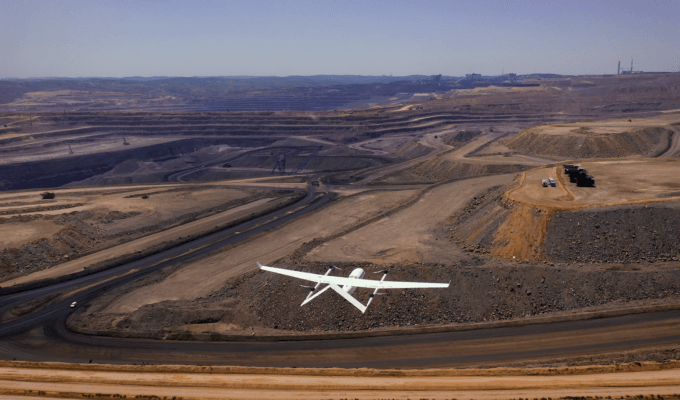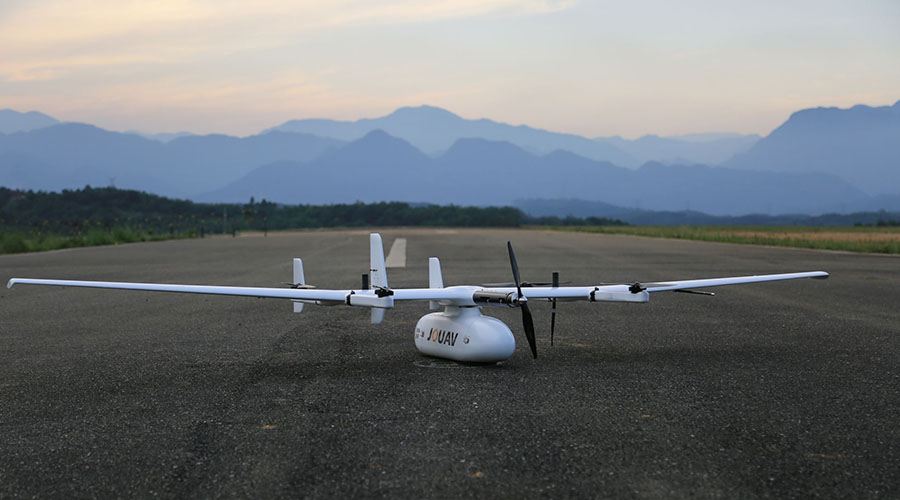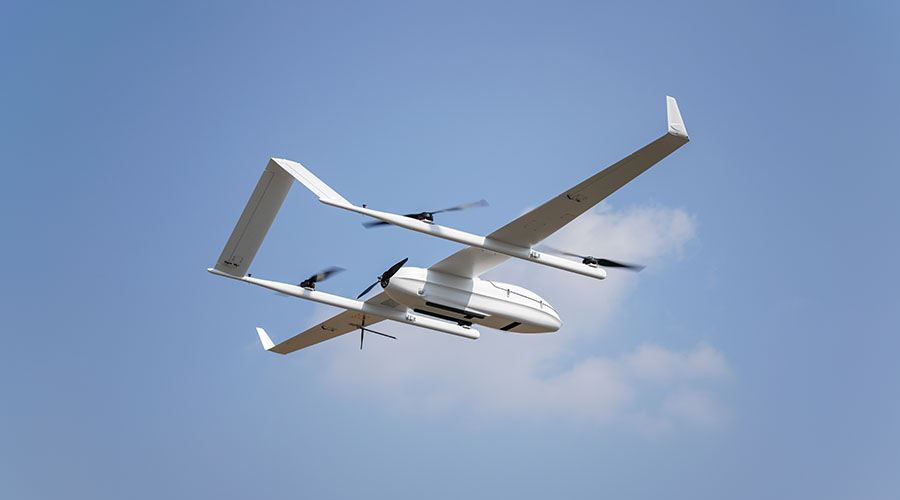An increasing number of people are now using commercial drones for 3D mapping purposes.
These drones capture data from the air and offer capabilities that traditional surveying cannot match—recording all objects quickly and with precision.
By leveraging photogrammetry software, you can stitch together the collected data into an accurate 3D model.
There, all captured information can be easily accessed and retrieved.
Drone-generated 3D models are widely utilized in urban planning, traffic management, telecommunications design, and more.
However, creating high-quality 3D models that look great from every angle is not as straightforward as simply purchasing an excellent survey drone. It involves several additional steps.
In this article, we’ll delve into everything you need to know about 3D drone mapping and modeling, including what a drone 3D model entails, which drone is the best for 3D mapping, and how to create a 3D model from drone images.
Let’s jump right in!

What is drone 3D mapping and modeling?
Drone 3D mapping refers to the process of capturing oblique images via drones using laser scanning and aerial photogrammetry techniques. 3D modeling, on the other hand, involves using specialized software to analyze and process the aerial images captured by the drone to create a 3D model with GPS coordinates and precise measurements.
What is a 3D model?
A 3D model is created by plotting individual points in 3D space along the X, Y, and Z axes, forming a three-dimensional representation of an object. These points are linked together using various geometric shapes like triangles, lines, and curved surfaces to create the final model.
Why drones are great for aerial photogrammetry?
There are numerous benefits to using aerial photogrammetry, regardless of the application.
Firstly, drone photogrammetry can easily capture data in areas that are hard or unsafe for surveyors to access, such as landslide-prone regions, crime or war zones, difficult terrains, and extreme weather conditions. This minimizes the risk of injury for the crew.
Secondly, drones equipped with high-resolution cameras can capture sharp and detailed photos. When RTK/PPK is enabled, the drone can provide highly accurate survey results.
- Read more: What is an RTK drone? How does it work?
Thirdly, drones significantly reduce the time required for field surveys. Drone photogrammetry is five times faster than terrestrial methods and requires fewer Ground Control Points (GCPs). This enables you to deliver your survey results quicker.
Lastly, drones drastically cut costs compared to hiring full equipment like helicopters and cranes. They are easy to operate, cost a fraction of manned aircraft, and eliminate significant fuel and labor expenses.

Best drone for 3D mapping and modeling
Are you searching for the best drone for 3D mapping? Not all drones are built for this purpose. Here, we’ll show you some of the best drones for 3D mapping that you can purchase.
JOUAV CW-15: Best entry-level drone for 3D mapping
The JOUAV CW-15 is a vertical take-off and landing (VTOL) fixed-wing drone specifically designed for 3D mapping. It offers a flight time of up to 180 minutes and a cruising speed of 61 km/h, making it an ideal choice for mapping tasks since it can cover a large area in a short time. With a range of up to 50 km, the CW-15 allows you to cover a vast area without worrying about losing the signal.
The CW-15 can carry different loads weighing up to 3 kg. It can carry a 155MP five-lens oblique camera for 3D surveys, a 50MP medium-format camera to capture orthophotos, and a LiDAR sensor to achieve centimeter-level 3D point clouds.
With its compact design, advanced obstacle avoidance features, and intelligent landing system, the CW-15 enables surveyors to capture more complex scenes while protecting the drone from more obstacles.

JOUAV CW-25E: Best drone for photogrammetry
The JOUAV CW-25E is a top-of-the-line drone for photogrammetry, offering impressive flight time, range, speed, and camera quality. Thanks to its powerful motor and large battery, the CW-25E provides 240 minutes of flight time and a speed of 72 km/h on a single charge, giving you ample time to cover a large area or get detailed photos/videos of a specific location.
With its self-developed PPK and RTK GNSS modules, the CW-25E photogrammetry drone achieves best-in-class vertical accuracy down to 1 cm while reducing ground control points by more than 80%.
With a range of 50 or 100 km, the CW-25E allows you to explore more of your surroundings and capture stunning images. This camera also records and outputs GPS coordinates and attitude angles at the time of exposure, providing you with the best 3D mapping solution.
- Read more: CW-25E VTOL with DG10 Oblique Camera Maps 30km² in 3 Flights with 3cm GSD

JOUAV CW-30E: Best drone for GIS mapping
The CW-30E is a hybrid electric and gas-powered drone for GIS mapping, providing centimeter-level positioning accuracy. It is specifically designed for mapping and its integrated RTK and PPK modules provide industry-leading positioning performance.
With a four-stroke EFI engine, the 3D modeling drone has a flight time of 600 minutes and a cruising speed of 90 km/h. The CW-30E also has a range of 200 km, so you can explore your surroundings to your heart's content without worrying about running out of battery or losing the signal.
Its large cabin space, extensive mechanical and electrical interfaces, and load capacity of up to 10 kg allow it to carry a variety of mission loads such as aerial cameras, oblique cameras, LiDAR sensors, and dual thermal cameras. Additionally, the CW-30E can take off and land anywhere, whether on a cliff, in the woods, in the mountains, or even on a moving boat or vehicle.

Drone 3D modeling software - Pix4D Mapper
Pix4D Mapper is a PC application focused on 2D orthomosaic and 3D model reconstruction. It is equipped with LiDAR point cloud processing, orthomosaic map stitching, 3D modeling, and more features. Its comprehensive reconstructed models are targeted at applications such as topographic mapping, power, emergency services, construction, transportation, and agriculture.
What is drone 3D mapping used for?
Since drone 3D models provide users with richer geographic information and a more user-friendly experience, the technology has found applications in numerous industries.
- Urban planning. Relevant departments can detect changes in buildings (like new constructions) and measure altered areas by comparing 3D maps from different periods, providing valuable evidence for demolition work. Read the real-world case study of the Weinan 3D modeling project.
- Architecture and landscape design. Teams often use photogrammetry to create accurate 3D models of public spaces. These models help them study the urban landscape and influence new designs.
- Farmers can utilize 3D models of farmland to gain a better understanding of the topography and soil conditions of the area. Drones are especially useful for companies managing large tracts of land, aiding in identifying problems like soil erosion and crop diseases.
- Construction industry. The construction industry employs drone 3D models to track and document project progress and assist in communicating site layouts, including the location of landscape elements and utility equipment. These 3D model drone inspections are also ideal for facility maintenance, such as backhoes, bulldozers, and excavators.
- Real Estate Management. Real estate companies use 3D maps of properties to associate service titles and registries with spatial locations, providing a reliable basis for future change comparisons.
- Equipment Inspections. Energy companies are using 3D models to inspect the condition of transmission towers, bridges, or cell towers from a safe distance. A full 360° view of all critical components gives your team the ability to analyze potential issues.
- Environmental monitoring. Forest service groups use drone 3D models to study invasive plant production and forest fires. Environmental inspectors can predict the likelihood of a disaster and help with disaster recovery tasks after a flood or hurricane event.
- Public safety. Using drone 3D models, law enforcement agencies can find the approximate hiding places of suspects and plan their arrests. In emergency situations, the data can also help first responders plan evacuation routes and enable rescue teams to locate missing persons and save lives.
How much does a drone 3D mapping cost?
One of the most common questions in the drone community is how much a drone costs. Intermediate drones for mapping cost less than $2,000 but can only perform basic mapping tasks. High-end mapping equipment can cost anywhere from $10,000 Carbon/Texture/Pattern Vinyl,Carbon Wrap Car Cost,Rainbow Chrome Vinyl,Atin Red Chrome Wrap Guangzhou Wanheyan Innovative Materials Co., Ltd. , https://www.wrapremi.com